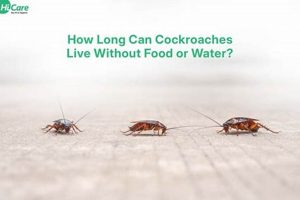The query of dietary progression following a dental extraction often surfaces around the third day post-procedure. This timeline marks a critical point in the initial healing phase, where the gum tissue is beginning to recover and the risk of immediate complications, such as bleeding, is diminishing. However, the suitability of resuming a normal diet depends on individual healing progress and adherence to post-operative instructions.
Proper nutrition is essential for optimal healing following any surgical procedure. Introducing more substantial textures too early can disrupt the clot formation in the extraction site, potentially leading to a painful condition known as dry socket. Conversely, delaying the reintroduction of a diverse diet for an extended period may hinder the body’s ability to repair tissue efficiently due to insufficient nutrient intake. A carefully managed transition back to typical eating habits is therefore important.
The following discussion details factors to consider when assessing the suitability of incorporating more solid consistencies into the diet after undergoing tooth removal, and offers guidelines for a safe and comfortable dietary progression.
Dietary Recommendations Following Tooth Extraction
The subsequent recommendations provide guidance for managing food intake in the days following a tooth extraction, particularly around the third day and beyond. These suggestions aim to facilitate healing and minimize potential complications.
Tip 1: Assess Pain Levels. Before attempting to introduce firmer foods, evaluate the level of discomfort. Persistent, significant pain indicates that the extraction site may still be too sensitive for solid textures. In such cases, continuing with softer options is advisable.
Tip 2: Begin with Soft Solids. If pain is minimal, introduce soft solids gradually. Examples include well-cooked pasta, mashed potatoes, or soft-scrambled eggs. These foods require minimal chewing and are less likely to irritate the extraction site.
Tip 3: Avoid Small, Hard Particles. Small, hard particles, like seeds, nuts, or granola, can become lodged in the extraction socket and impede healing or cause infection. Strict avoidance of these items is crucial during the initial recovery phase.
Tip 4: Chew on the Opposite Side. When reintroducing more solid foods, chew exclusively on the side of the mouth opposite the extraction site. This minimizes direct pressure and potential trauma to the healing area.
Tip 5: Maintain Hydration. Adequate hydration is essential for overall healing and helps to keep the mouth moist. Drink plenty of water throughout the day, but avoid using straws, as the suction can dislodge the blood clot.
Tip 6: Monitor for Swelling or Bleeding. Following the introduction of solid foods, closely monitor for any signs of increased swelling, bleeding, or pain. Should any of these symptoms occur, revert to a softer diet and consult with the oral surgeon or dentist.
Tip 7: Practice Gentle Oral Hygiene. Continue to practice gentle oral hygiene, including rinsing with saltwater after meals, to keep the extraction site clean. Avoid brushing directly on the extraction site initially.
Adherence to these guidelines contributes to a smoother and more comfortable recovery process, allowing for a gradual and safe return to normal dietary habits.
These recommendations serve as a general guide; individual needs may vary. Consulting with a dental professional for personalized advice remains paramount.
1. Healing Progression
The determination of whether solid foods may be consumed three days following tooth extraction is directly contingent upon the individual’s healing progression. The initial 72 hours post-extraction are critical for clot formation and the commencement of tissue regeneration within the socket. Premature introduction of solid textures can disrupt these processes, leading to complications. If, during this period, the patient experiences ongoing bleeding, significant pain, or visible inflammation around the extraction site, it suggests that the healing process is not sufficiently advanced to accommodate solid food consumption. In such instances, maintaining a soft or liquid diet remains paramount to avoid trauma to the delicate healing tissues.
Conversely, if the patient reports minimal discomfort, cessation of bleeding, and a visible reduction in swelling by the third day, a cautious introduction of soft solid foods may be considered. This assessment necessitates a careful evaluation of the extraction site’s appearance. A healthy healing socket will exhibit early signs of granulation tissue formation, a precursor to complete gum tissue closure. Examples of appropriate food choices at this stage include well-cooked pasta, mashed potatoes, and yogurt, each of which minimizes the force exerted on the healing area during mastication. Failure to accurately gauge healing progression can result in dislodged blood clots, delayed healing times, and increased susceptibility to infection.
In summation, the connection between healing progression and the ability to resume solid food consumption after tooth extraction is a direct cause-and-effect relationship. Objective indicators such as pain levels, bleeding presence, and visual inspection of the extraction site serve as reliable measures of healing advancement. Prematurely transitioning to solid foods without adequate healing carries inherent risks, while a properly assessed and gradual dietary progression facilitates a smoother and less complicated recovery. Consulting with a dental professional for individualized recommendations remains crucial in navigating this process.
2. Pain Management
Following tooth extraction, pain levels serve as a critical indicator of the healing process and directly influence dietary progression. Effective pain management is paramount in determining the appropriateness of introducing solid foods three days post-procedure. Elevated pain signals inflammation or potential complications, such as dry socket, which contraindicate the consumption of anything beyond soft or liquid nourishment. Attempts to chew solid foods in the presence of significant pain can exacerbate discomfort, further irritate the extraction site, and potentially disrupt clot formation, leading to delayed healing or secondary infection. Thus, the correlation between pain management and dietary advancement is a cause-and-effect relationship; inadequate pain control necessitates adherence to a restricted diet to mitigate the risk of complications.
Successful pain management facilitates a more comfortable and gradual transition back to a normal diet. When pain is well-controlled through prescribed analgesics or over-the-counter pain relievers, individuals are better able to tolerate the minor pressures associated with chewing softer solid foods. For instance, a patient who effectively manages pain with ibuprofen may be able to comfortably consume mashed potatoes or well-cooked pasta on the third day, whereas a patient experiencing uncontrolled pain would likely be restricted to liquids or pureed foods. Furthermore, effective pain relief encourages proper oral hygiene practices, such as gentle rinsing with saltwater, which contributes to a cleaner extraction site and promotes healing. The absence of pain also reduces the likelihood of unconsciously tensing facial muscles, which can further irritate the extraction site.
In summary, pain management is not merely a comfort measure; it is an integral component of the post-extraction healing process that directly influences dietary progression. Poor pain control necessitates dietary restrictions to prevent complications, while effective pain management allows for a more comfortable and timely return to solid foods. Individual experiences may vary, and it is crucial to consult with the oral surgeon or dentist to establish a personalized pain management plan and dietary timeline. This collaborative approach ensures that the patient’s comfort and safety remain the priority throughout the recovery period.
3. Soft Food Tolerance
The ability to comfortably consume soft foods following tooth extraction is a key determinant in the appropriate timing for introducing more solid consistencies. The degree to which an individual can tolerate soft textures without experiencing pain or discomfort provides essential information regarding the readiness of the extraction site to handle increased chewing forces.
- Initial Dietary Transition
The immediate post-extraction period typically necessitates a liquid or pureed diet. As healing progresses, the introduction of soft foods, such as yogurt, applesauce, or mashed potatoes, serves as a crucial step. This stage evaluates the patient’s ability to manage textures requiring minimal chewing effort. Successful navigation of this phase indicates a reduction in inflammation and improved tissue integrity around the extraction site, which are prerequisites for advancing to more solid foods.
- Pain as a Tolerance Indicator
Pain serves as a primary indicator of tolerance. If consuming soft foods elicits pain, it signifies that the extraction site remains sensitive and vulnerable. Persistence of pain necessitates continued adherence to a softer diet to prevent further irritation or disruption of the healing process. The absence or significant reduction of pain upon consuming soft foods, conversely, suggests improved tolerance and readiness for a gradual transition to more substantial textures.
- Gastrointestinal Considerations
Extended periods of restricted diets, particularly those lacking in fiber, can affect gastrointestinal function. The introduction of soft foods that are easily digestible and nutrient-rich can aid in maintaining digestive regularity and overall well-being. Tolerance of soft foods also indicates the body’s capacity to absorb nutrients from more substantial meals, facilitating the healing process. Inability to tolerate even soft foods may point to underlying gastrointestinal sensitivities that require further evaluation.
- Psychological Impact of Dietary Progression
The ability to tolerate soft foods extends beyond physical healing; it also has a psychological component. Successfully transitioning to soft foods can improve morale and reduce the frustration associated with dietary restrictions. This positive reinforcement can encourage adherence to post-operative instructions and facilitate a more optimistic outlook on the recovery process. Conversely, persistent inability to tolerate soft foods may lead to discouragement, potentially impacting the patient’s overall adherence to recommended care.
In summary, soft food tolerance is not merely a dietary consideration; it is a multifaceted indicator of the healing progress following tooth extraction. Assessment of soft food tolerance, with consideration for pain levels, gastrointestinal function, and psychological factors, provides a more complete understanding of the patient’s readiness to advance to a more solid diet. Premature introduction of solid foods without adequate soft food tolerance can increase the risk of complications and delay the overall healing process.
4. Chewing Location
The location of chewing activity, specifically in relation to the extraction site, exerts a significant influence on the feasibility of solid food consumption three days post-tooth extraction. The principle underlying this connection is rooted in biomechanics and tissue healing. Chewing directly over the extraction site generates substantial pressure and shear forces that can disrupt the nascent clot formation, leading to potential complications such as dry socket, delayed healing, and pain. Conversely, chewing solely on the opposite side minimizes the direct impact on the surgical area, providing a more conducive environment for tissue regeneration.
For instance, consider two individuals who underwent similar molar extractions. Individual A, disregarding post-operative instructions, chews indiscriminately on both sides of the mouth, including the extraction site. This individual experiences increased pain, prolonged bleeding, and ultimately develops dry socket, delaying their return to a normal diet. In contrast, Individual B meticulously adheres to the recommendation of chewing exclusively on the opposite side. This individual experiences minimal discomfort, demonstrates progressive clot formation, and is able to gradually reintroduce soft solids by the fourth day, showcasing the direct benefit of controlled chewing location. Understanding this interplay is of practical significance for dental professionals in educating patients about post-operative care. Clear and concise instructions regarding chewing location can directly impact the success of healing and the patient’s overall recovery experience.
In summary, chewing location represents a controllable factor in the post-extraction healing process. Deliberate chewing on the side opposite the extraction site is an essential component of a prudent dietary strategy, minimizing trauma and fostering an environment conducive to tissue repair. While individual healing rates vary, adherence to this guideline offers a practical approach to optimize recovery and facilitate a more comfortable return to solid food consumption. Failure to consider chewing location poses a tangible risk to the healing process, potentially negating other beneficial dietary modifications.
5. Particle Avoidance
Following tooth extraction, preventing particle accumulation within the socket is paramount to uneventful healing. Premature introduction of solid foods increases the risk of particle lodgment, potentially leading to infection and delayed recovery. Therefore, an understanding of particle avoidance strategies is crucial in determining when solid food consumption is appropriate.
- Size and Texture Considerations
Foods containing small, hard particles, such as seeds, nuts, or even coarsely ground spices, present a significant risk. These particles can easily become trapped within the extraction site, resisting natural cleansing mechanisms. The presence of such foreign bodies can trigger an inflammatory response, impeding tissue regeneration and predisposing the site to infection. Therefore, meticulous attention to food texture and particle size is essential when progressing towards solid foods.
- Food Consistency and Clearance
The consistency of ingested food impacts its propensity for socket lodgment. Sticky or viscous foods, like caramel or improperly chewed gummy candies, can adhere to the extraction site, creating an environment conducive to bacterial growth. Conversely, foods that are easily cleared from the oral cavity, such as well-cooked vegetables or finely ground meats, pose a lower risk. Thorough chewing and rinsing after meals are critical in ensuring clearance and minimizing particle retention.
- Oral Hygiene Practices and Particle Removal
Effective oral hygiene practices play a vital role in particle removal. Gentle rinsing with saline solution following meals aids in dislodging food debris without disrupting clot formation. However, forceful rinsing or irrigation should be avoided, as it may dislodge the protective clot. Soft brushing of adjacent teeth, taking care to avoid direct contact with the extraction site, further contributes to a clean oral environment and minimizes the risk of particle accumulation.
- Food Selection and Risk Mitigation
Strategic food selection is a proactive approach to particle avoidance. Prioritizing foods that are easily broken down and cleared from the mouth, while avoiding those known to contain problematic particles, significantly reduces the likelihood of complications. For example, opting for smooth soups or pureed fruits over salads or foods with tough skins demonstrates a conscious effort to minimize particle-related risks. Thoughtful food choices, coupled with diligent oral hygiene, constitute a comprehensive strategy for particle avoidance following tooth extraction.
The avoidance of particle accumulation within the extraction socket is a fundamental aspect of post-operative care. By considering particle size, food consistency, oral hygiene practices, and strategic food selection, individuals can significantly reduce the risk of complications and promote uneventful healing. Consequently, the decision to reintroduce solid foods must be guided by a thorough assessment of these factors, ensuring that the extraction site is adequately protected from particle-related trauma and infection.
6. Hydration Maintenance
Maintaining adequate hydration post-tooth extraction is not merely a matter of general well-being; it directly influences the oral environment and the body’s capacity for tissue repair, thereby impacting the timeline for resuming solid food consumption. Dehydration can compromise the healing process, potentially delaying the return to a normal diet.
- Saliva Production and Oral Clearance
Saliva plays a crucial role in maintaining oral hygiene and facilitating the natural clearance of food debris. Adequate hydration promotes sufficient saliva production, which helps prevent food particles from accumulating in the extraction socket. Reduced saliva flow due to dehydration increases the risk of particle retention, elevating the potential for infection and delaying the transition to solid foods. A well-hydrated individual experiences more efficient self-cleansing of the oral cavity, supporting a swifter recovery and allowing for a potentially earlier introduction of solid textures.
- Tissue Hydration and Wound Healing
The body’s tissues require adequate hydration to function optimally, including those involved in wound healing. Dehydration can impair cellular function, hindering the formation of new tissue and slowing down the healing process at the extraction site. Properly hydrated tissues are more resilient and better equipped to resist infection, thereby promoting faster clot stabilization and facilitating the progression to solid food consumption. Insufficient hydration can compromise tissue integrity, making the extraction site more vulnerable and necessitating a prolonged period of dietary restriction.
- Medication Metabolism and Fluid Balance
Post-extraction pain management often involves the use of analgesic medications. Adequate hydration is essential for the proper metabolism and excretion of these medications. Dehydration can impair kidney function, potentially leading to a buildup of medication in the system and increasing the risk of adverse effects. Maintaining proper fluid balance supports efficient medication metabolism, indirectly contributing to a more comfortable recovery and allowing for a more timely return to solid food consumption.
- Dietary Restrictions and Nutrient Delivery
The initial dietary restrictions following tooth extraction limit the intake of essential nutrients. Hydration, therefore, becomes even more critical for nutrient delivery to the healing tissues. Water serves as a transport medium for nutrients, ensuring that the cells involved in tissue repair receive the necessary building blocks for regeneration. Dehydration can impair nutrient delivery, potentially slowing down the healing process and prolonging the period of dietary limitation. Maintaining adequate hydration optimizes nutrient availability, promoting a more efficient recovery and allowing for a faster transition to a broader, more nutritious diet.
In conclusion, hydration maintenance is not merely a supplementary aspect of post-extraction care; it is an integral component that directly influences the oral environment, tissue healing, medication metabolism, and nutrient delivery. By optimizing these factors, adequate hydration promotes a more comfortable and efficient recovery, potentially facilitating an earlier and safer return to solid food consumption. Conversely, neglecting hydration can compromise the healing process, delaying dietary progression and increasing the risk of complications.
Frequently Asked Questions
The following section addresses common inquiries regarding the resumption of solid food consumption after tooth extraction. These answers provide a general overview; individual circumstances may necessitate personalized advice from a dental professional.
Question 1: Is solid food consumption permissible three days after tooth extraction?
The suitability of solid food consumption three days after tooth extraction hinges on individual healing progress. Factors such as pain levels, bleeding, and swelling must be considered. If discomfort is minimal and bleeding has ceased, soft solids may be cautiously introduced. If pain persists, a softer diet is advisable.
Question 2: What types of solid foods are appropriate to consume three days post-extraction?
When progressing to solid foods, prioritize soft, easily chewable options. Examples include well-cooked pasta, mashed potatoes, soft scrambled eggs, and yogurt. Avoid hard, crunchy, or chewy foods that may irritate the extraction site.
Question 3: What foods should be avoided when reintroducing solid food post-extraction?
Avoid foods containing small, hard particles like seeds, nuts, or granola, as these can become lodged in the extraction socket and impede healing. Additionally, refrain from consuming spicy, acidic, or overly hot foods, as they may irritate the sensitive tissues.
Question 4: How does chewing impact the extraction site during solid food consumption?
Chewing exerts pressure on the extraction site, potentially disrupting clot formation. To minimize this risk, chew food exclusively on the side of the mouth opposite the extraction. This reduces direct trauma and promotes undisturbed healing.
Question 5: What are the signs that solid food consumption is negatively impacting the extraction site?
Signs that solid food consumption is negatively impacting the extraction site include increased pain, renewed bleeding, increased swelling, or visible inflammation. Should any of these symptoms arise, revert to a softer diet and consult with the oral surgeon or dentist.
Question 6: How does oral hygiene relate to solid food consumption after tooth extraction?
Maintaining meticulous oral hygiene is paramount when reintroducing solid foods. Gentle rinsing with saltwater after meals helps to remove food debris and prevent infection. However, avoid forceful rinsing or direct brushing of the extraction site initially.
Successful recovery after tooth extraction requires careful attention to dietary progression, pain management, and oral hygiene. While these FAQs offer general guidance, personalized recommendations from a dental professional are essential for optimal healing.
The following section details warning signs to monitor following tooth extraction.
Dietary Resumption Post-Extraction
The exploration of dietary progression, specifically addressing “can I eat solid food 3 days after tooth extraction,” reveals a nuanced interplay of factors. Individual healing rates, pain management effectiveness, soft food tolerance, strategic chewing location, diligent particle avoidance, and consistent hydration maintenance collectively determine the suitability of solid food reintroduction. Deviation from established post-operative protocols can compromise healing and elevate the risk of complications.
Therefore, while the third day post-extraction often marks a point of potential dietary advancement, a judicious and informed approach is paramount. Prioritizing personalized consultation with a dental professional ensures alignment between dietary choices and individual healing trajectories, promoting optimal outcomes and minimizing potential setbacks in the recovery process. Continued adherence to professional guidance remains critical for sustained oral health and long-term well-being.







